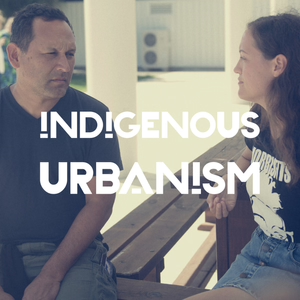
EPISODE SUMMARY: On this episode of Indigenous Urbanism, we speak with Kevin O’Brien, an architect from the Meriam and Kaurareg people of the Torres Strait, Australia. In his work, Kevin has explored a wide range of architectural processes that consider the emptying of the city in order to reveal Country.
GUESTS: Kevin O'Brien
FULL TRANSCRIPT:
Jade Kake: Tēnā koutou katoa
Nau mai haere mai ki te Indigenous Urbanism, Aotearoa Edition, Episode 13.
I’m your host Jade Kake and this is Indigenous Urbanism, stories about the spaces we inhabit, and the community drivers and practitioners who are shaping those environments and decolonising through design.
On this episode of Indigenous Urbanism we speak with Kevin O’Brien, an indigenous architect practicing in Brisbane, Queensland, Australia. Kevin belongs to the Meriam and Kaurareg peoples of the Torres Strait, a group of islands located in north-eastern Australia.
To kick off, could you tell me who you are, where you're from, and what you do?
Kevin O'Brien: My name is Kevin O'Brien. I'm a descendant of the Kaurareg and Meriam people from the Torres Strait. I'm an architect, practising in Brisbane, and I’m Professor of Creative Design at the University of Sydney.
JK: How did this relationship and collaboration internationally start? And how is this kind of sharing and dialogue influenced your practice?
KOB: So I think this set of relationships that have developed for me have taken almost 20 years to happen. It started with a guy called Rewi Thompson, up in Auckland, but we actually met in Sydney at a student conference back in the late 90s. And at the time I was working with one other Aboriginal man in Australia, also in Sydney, another architect. And at the time we were the only two. And then we met Rewi, and we thought, oh maybe there's three of us. And we hadn't at any point really looked outside of where we were in Sydney. We were quite young at the time, and we were just trying to get by. Then as we met Rewi we met other people over here, and then slowly but surely over the last 20 years it's been sort of dripping, dripping, dripping, dripping, and the dripping's turning into a bit more of a flow now. And finally, sort of early 2000s we started to meet people up in Canada and the States, and the network sort of started to... you know, it was nice and social and easy and it's just sort of grown and grown. And then I think in the last 12 months it hit some kind of tipping point, which was fantastic, because it's ended up in a really big sort of critical mass between Australia, New Zealand and Canada. One of the fruits of that growing is I think this book that's just about to be published.
JK: Something that is a recurring theme between our countries being settler-colonial nations is this real tension between rural and hau kāinga, like home communities, that might be quite geographically isolated from the urban centres where a lot of our people now live. So I'm just wondering, how do you kind of navigate that as an architect, and how your approaches might be different on Country versus being in these colonised cities.
KOB: I think in the Australian setting, we've got a quilt work of Aboriginal countries across the continent, and then in understanding that, then it's easy to understand the two roles, or the two hats we wear, as architects. Because one is as a professional architect, in the modern sense, but there's something that informs that in terms of an obligation as an Aboriginal man, and that is that you have expectations and cultural obligations. And one of them is to understand precisely what Country you're standing on, before you do anything. Once you're aware of that as a starting point, it does two other things. One is it helps you to look inside yourself and understand who you are, but more importantly, you can only really do that if you have genuine relationships with the people of that place. So once those things are kind of set out, and they develop over time as well, the architecture can then be enabled and followed. So, what I tend to find is, from observing other people and other architects and how they practice, they tend to strike difficulty when they don't have those relationships, or they don't know themselves, or they try to impose work onto a community or onto a place.
JK: And they imagine maybe sometimes a cultural blankness, I think that comes with being, you know, a colonising group.
KOB: To be honest, it's not bound to one culture or the other. I've seen this [from] fellow Aboriginal people, and also non-Aboriginal people. And, it's not one easily explained, but in my experience I've seen some of that occur purely out of, not a lack of maturity, but someone who's in the process of maturing, and they're finding out or starting from a point of naivety, but they're on a search to get to another place. And inevitably, mistakes...
09/13/18 • 23 min
Generate a badge
Get a badge for your website that links back to this episode
<a href="https://goodpods.com/podcasts/indigenous-urbanism-68738/in-conversation-with-kevin-obrien-3641768"> <img src="https://storage.googleapis.com/goodpods-images-bucket/badges/generic-badge-1.svg" alt="listen to in conversation with kevin o'brien on goodpods" style="width: 225px" /> </a>
Copy